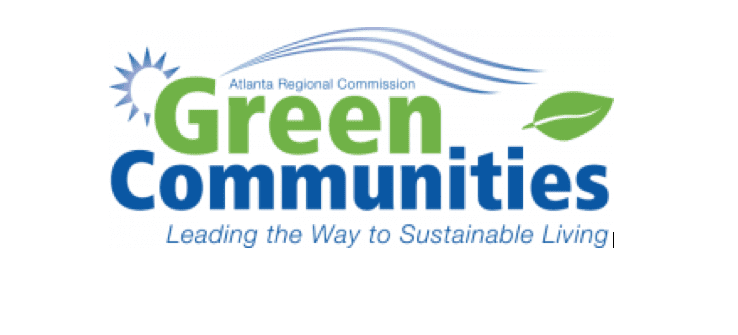 Rockdale County has once again achieved certification as a Green Community, advancing to the Silver level, after first certifying two years ago.
Rockdale County has once again achieved certification as a Green Community, advancing to the Silver level, after first certifying two years ago.
The Atlanta Regional Commission’s Green Communities program is a voluntary certification program that helps local governments implement measures that will reduce their environmental impact. It recognizes their commitment to environmental stewardship and their leadership in sustainability practices.
All winners earned certification points for sustainable measures implemented in their communities. Some measures that earned Rockdale certification points include:
- Creating and implementing an ENERGY STAR strategy for the future, and actively advertising its status as an ENERGY STAR partner to county employees and
- Installing two cool roofs at the Quigg Water treatment facility. The roofs total 12,000 square feet, and a sign explains the benefits of cool roofs to
- Installing the Parker Road Demonstration Rain Garden, a 1,500 square foot garden with the capacity to treat about 10 percent of the storm water coming from the road and parking lot of a former manufacturing building. The highly visible location is frequented by residents participating in nearby community
- Using satellite and aerial imaging to spot water leaks in underground distribution and transmission pipes. Compared to traditional detection methods, this saves both time and water.
- Providing educational materials about glass recycling as well as providing a collection location.
In metro Atlanta, 20 local governments — 13 cities and seven counties – are currently certified under the ARC Green Communities program. This is the first program in the country to promote sustainability through a green certification program for local governments.
“We applaud these local governments for reducing their environmental impact,” said ARC chairman Kerry Armstrong. “As they do so, they lead the way in creating a greener and more livable region.”
ARC developed the Green Communities Program in 2009 to recognize local governments that invest in programs and policies that lead to a more sustainable region. The nationally recognized program showcases the many ways that local governments can reduce their environmental footprint.
Together, the green efforts of these local governments have had the following cumulative impact over the past four years:
- 7 million gallons of water saved or reused
- 381 additional acres of greenspace
- 19,100 tons of household hazardous waste collected
- More than $1.4 million in utility savings
- 19,700,000 kWh of energy saved


![Validate my RSS feed [Valid RSS]](https://web.archive.org/web/20240108205913im_/https://ocgnews.com/wp-content/uploads/2022/07/valid-rss-rogers.png)

